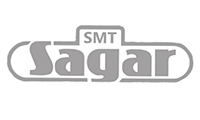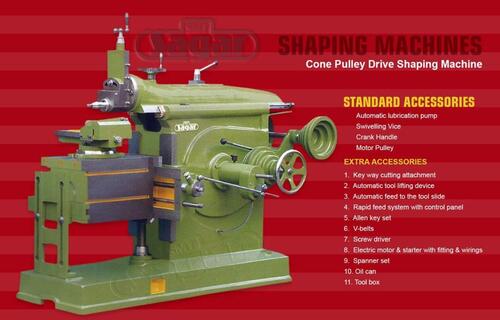Shaping Machines
Product Details:
Shaping Machines Price And Quantity
- 300000 INR/Unit
- 1 Unit
Shaping Machines Trade Information
- Cash Advance (CA) Cash in Advance (CID)
- 10 Unit Per Month
- 1 Week
- Yes
- Sample costs shipping and taxes has to be paid by the buyer
- Asia Australia Central America North America South America Eastern Europe Western Europe Middle East Africa
- All India South India Central India West India North India East India Gujarat Karnataka Kerala Lakshadweep Mizoram Meghalaya Manipur Andhra Pradesh Bihar Chandigarh Daman and Diu Goa Jharkhand Odisha Punjab Assam Delhi Dadra and Nagar Haveli Andaman and Nicobar Islands Arunachal Pradesh Chhattisgarh Haryana Himachal Pradesh Jammu and Kashmir Madhya Pradesh Maharashtra Nagaland Rajasthan Sikkim Tamil Nadu Telangana Tripura Pondicherry Uttar Pradesh Uttarakhand West Bengal
Product Description
Sagar Machine Tools
Shaping machines are metalworking machines designed to cut and shape metal workpieces into specific forms and contours. These machines use a cutting tool, typically a single-point cutting tool, to remove material from the workpiece in a controlled manner. Shaping machines are widely used in manufacturing and machining processes for creating flat surfaces, grooves, slots, and other geometric shapes on metal parts.
Here are key features and aspects of shaping machines:
Principle of Operation: The basic principle of a shaping machine involves a reciprocating motion of the cutting tool and a continuous feed of the workpiece. The cutting tool removes material during the forward stroke, and the return stroke is non-cutting, allowing for repositioning.
Parts of a Shaping Machine:
Tool Head: The tool head holds the cutting tool and provides the necessary movement for shaping the workpiece.
Ram: The ram is the reciprocating part of the machine that carries the tool head. It moves back and forth to perform the cutting operation.
Table: The workpiece is mounted on the table, which can be adjusted vertically to accommodate different workpiece sizes.
Base: The base provides stability and support for the entire machine.
Types of Shaping Machines:
Horizontal Shaper: In a horizontal shaping machine, the workpiece is positioned horizontally on the table.
Vertical Shaper: In a vertical shaping machine, the workpiece is mounted vertically.
Tool Feed Mechanism: Shaping machines employ different mechanisms for feeding the cutting tool. This can include hydraulic, mechanical, or automatic feed mechanisms to control the depth and rate of the cutting.
Applications: Shaping machines are used for various applications, including creating flat surfaces, keyways, slots, grooves, and irregular profiles on metal workpieces. They are commonly used in the production of machine parts, gears, and components for machinery.
Automation: Some modern shaping machines may include automation features such as automatic tool adjustment, tool changing systems, and digital controls for increased precision and efficiency.
Advantages: Shaping machines are versatile and can be used for a variety of shaping operations on different materials. They are suitable for both small-scale workshops and large-scale manufacturing facilities. Shaping machines are relatively simple in design, making them easy to operate and maintain.
Limitations: Shaping machines may have slower cutting speeds compared to some other machining processes. The cutting tool's geometry and limitations in shaping machine design may restrict the complexity of shapes that can be produced. Overall, shaping machines remain valuable in manufacturing processes where their specific capabilities meet the requirements of the workpieces being produced.

 English
English Spanish
Spanish French
French German
German Italian
Italian Chinese (Simplified)
Chinese (Simplified) Japanese
Japanese Korean
Korean Arabic
Arabic Portuguese
Portuguese
 Send Inquiry
Send Inquiry Send SMS
Send SMS